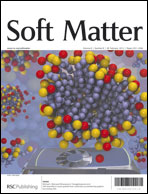A model for the adsorption of colloidal particles on a planar surface is analyzed by using a thermodynamic chemical equilibrium model and Monte Carlo simulations. Central to this investigation are that (i) particles and surface are considered to be of the same material and (ii) the particle–surface and particle–particle interactions are related using the Derjaguin approximation using a surface–surface square-well potential as a basis. Thereby, all interactions within the system are characterized by the same parameters, and hence the difference between particle adsorption on the surface and particle aggregation in bulk is solely due to geometrical effects. Equilibrium constants for the different binary associations are calculated from the interaction potentials enabling a direct comparison between predictions based on a chemical equilibrium model and on computer simulations with no adjustable parameters. As the interaction gradually is made more attractive for a given particle concentration, we find the following sequence of events: (A) a weak particle adsorption onto the surface, (B) particle association on the surface forming a denser single adsorbed layer, (C) formation of a second adsorbed layer on the surface, (D) multiple adsorbed layers on the surface, and (E) bulk phase separation. There is a semi-quantitative agreement between the predictions of the equilibrium model and the results of the simulations. The equilibrium model calculations facilitate a conceptual understanding of the competition between association on a surface and in bulk. Our study is relevant both for understanding processes where colloidal particle adsorption is used to modify surface properties and also for the understanding of heterogeneous versus homogeneous nucleation.

You have access to this article
 Please wait while we load your content...
Something went wrong. Try again?
Please wait while we load your content...
Something went wrong. Try again?


 Please wait while we load your content...
Please wait while we load your content...